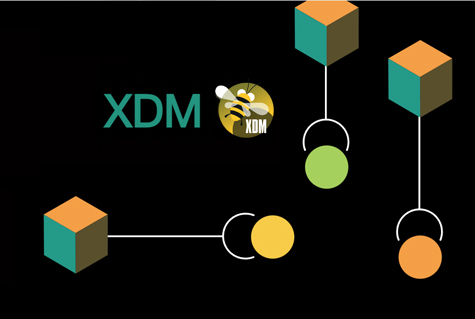An agile tool for automated test data procurement impacts multiple departments within an organization, making it essential to convince all stakeholders of its benefits before implementation. This can prove to be a challenging task. However, getting the relevant departments on board as soon as possible will enable everyone to benefit from this new solution. UBS Hainer helps to coordinate and accelerate this process.
The Classic Way – Driving the Idea
In many organizations, test data management is a limiting factor. Procuring test case data is time-consuming, resource-intensive, and often leads to compromises at the expense of development speed or software quality.
Usually, there is a department that takes the initiative to drive modern test data automation. They see the practical benefits in an agile context and become the driving force behind the idea. In practice, however, their enthusiasm is often tempered by the practical requirements. It quickly becomes clear that some kind of internal advertising phase needs to be started to get other departments on board.
“The implementation of an automation tool, such as XDM, requires interdisciplinary collaboration among various departments,” says Christoph Stock, Product Development Manager at UBS Hainer. “To do this, you first have to get everyone excited about the idea and get them to work together.”
This starts with the system technology and infrastructure and extends through the entire IT area and beyond, because ultimately the financing of the project must also be decided at the appropriate point.
“I need the people who are responsible for the network, storage space, virtual machines, firewalls, etc.,” Christoph Stock continues. “Then the database experts and administrators have to get involved and, of course, the software developers and architects. Because they know how and where the data is stored and how it is connected. Finally, the end-users – i.e. the testers – should be on board and, last but not least, the compliance and data protection officers. They have specific ideas on data masking and anonymization.”
Business cases, imperatives and experience
The ideal way to achieve the participation of all necessary players is to carry out a business case for each individual area. This will clearly demonstrate the benefits and impact of the implementation, as well as identify potential stress factors to be avoided in future.
Sometimes there are also legal requirements for launching a new application. Recently, the concepts of compliance, masking and data protection have repeatedly been the leading factors behind changes. Such requirements carry a higher priority than the technical aspects of the company.
Ultimately, there needs to be someone in the organization who can take the lead and unite stakeholders across different departments and responsibilities. “We have encountered this scenario multiple times with UBS Hainer’s clients”, Christoph Stock explains. “Most organizations follow a similar process. Through our experience, we are familiar with who is usually responsible for particular subjects and what has been effective for other clients. Consequently, we can offer support during the process.”
Innovation through agile insight
But things can also turn out quite differently: Christoph Stock reports on a case where the need for action was identified through a Scrum Master Board. In the discussions of this interdisciplinary team, the same bottlenecks kept coming up.
“The development teams then report that there are regular delays when it comes to test data,” says Christoph Stock. “And the technical teams complain that they have to do so much extra work with the test data. Others are concerned that the test data is not anonymized, and so on. This issue really comes from all directions,” Stock continues. “And then the realization matures that an overall project is needed to concretely address the issue.”
In this case, the problem became visible through an interdisciplinary board and led to the start of the project, as all parties involved had already recognized the need for action. Nevertheless, the same applies here as everywhere else: this project should be located as close as possible to the IT management in order to involve and motivate all necessary departments during the course of the project.
Incremental introduction
Another way to introduce such a tool is through a pilot project. In this case, one or two teams would decide to use the automation – limited to their area. The prerequisite for this is, of course, the freedom to make such technological decisions.
The pilot project would ensure that everything required for the area in question is connected and tested, allowing for practical experience and learning how it interacts with their own technology.
“We have also experienced and supported this option several times,” says Christoph Stock. “And if the small installation works for everyone involved in the given area, and the benefits become apparent, then the question arises: Isn’t this a platform that we want to establish throughout the entire company?”
This would produce significant benefits from the pilot project’s experience.
PoC as the best way to get started
Whatever the initial situation, a PoC (proof of concept) is the optimal starting point to experience the practicality of XDM live. A PoC minimizes complexity, allowing potential customers to grasp the key application features quickly and realistically.
While maintaining security-relevant features, a PoC can use one or two shortcuts, such as excluding irrelevant requirements, to expedite the process.
Christoph Stock believes that the key to successfully establishing the automation process is to consider the entire concept from start to finish. “Prioritizing tasks and temporarily shelving certain requirements can be more beneficial for the overall project than striving for perfection in every step of implementation”, says Stock. A PoC can be a helpful tool in comprehending the entire process from beginning to end. Afterward, integrating the deferred points can be expedited.
“It’s an incremental approach and pioneering work initially,” states Christoph Stock. “However, experience has proven it the most efficient means to attain the objective.”


